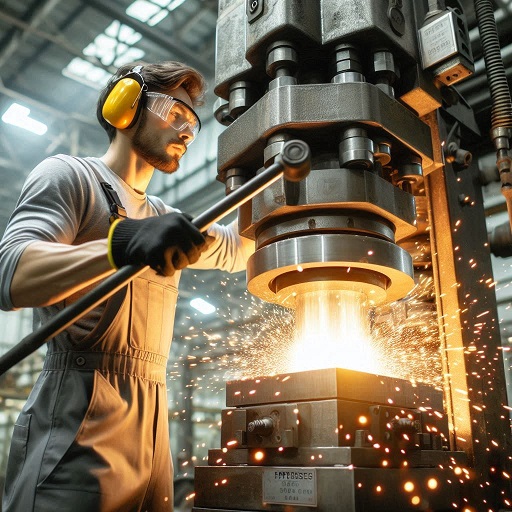The isostatic pressing industry is undergoing rapid transformation, driven by technological advancements, evolving industrial applications, and the increasing demand for high-performance materials.
This article explores the future of the isostatic pressing industry, delving into key trends, growth factors, market size, share, leading companies, regional analysis, opportunities, challenges, and market segmentation by type, hot isostatic pressing (HIP) capacity, and industry applications.

Isostatic Pressing Industry Overview
Isostatic pressing is a manufacturing process that applies equal pressure in all directions to compact powders into solid materials, enhancing their density and mechanical properties.
There are two main types of isostatic pressing: Cold Isostatic Pressing (CIP) and Hot Isostatic Pressing (HIP). CIP uses fluid as a medium and operates at room temperature, while HIP uses gas (typically argon) at high temperatures to improve the properties of the pressed materials.
Isostatic Pressing Market Trends
- Increased Adoption in Aerospace and Defense: The aerospace and defense sectors are key adopters of isostatic pressing technologies, particularly HIP, due to the need for high-strength, lightweight, and defect-free components.
- Growing Demand for Additive Manufacturing: The rise of additive manufacturing has spurred demand for HIP to eliminate residual porosity and improve the fatigue resistance of 3D-printed parts, further driving the market.
- Sustainability and Energy Efficiency: With growing emphasis on sustainability, manufacturers are seeking energy-efficient isostatic pressing solutions that minimize waste and reduce carbon footprints.
- Advancements in Material Science: Ongoing innovations in materials such as titanium alloys, ceramics, and composites are expanding the scope of isostatic pressing applications across various industries.
Isostatic Pressing Market Size and Growth
The isostatic pressing market is projected to grow significantly over the coming years. This growth is driven by the expanding aerospace and automotive industries, increasing demand for advanced ceramics, and the rising adoption of HIP in the medical and energy sectors.
The global isostatic pressing market is expected to be worth USD 7.6 billion in 2024 and USD 9.9 billion by 2029, with a 5.4% CAGR during the forecast period.
Stay ahead of the competition—download the future Isostatic Pressing industry full report now and make informed decisions to power your business growth!
Isostatic Pressing Industry Share and Top Companies
Key players in the isostatic pressing industry include:
- Bodycote PLC: A leader in HIP services, offering a broad range of thermal processing services across various industries.
- Kobe Steel, Ltd.: Known for its advanced HIP equipment, particularly in the aerospace and automotive sectors.
- Nikkiso Co., Ltd.: Provides a range of HIP systems with innovative solutions for the energy and medical device industries.
- EPSI (Engineered Pressure Systems International): A leading provider of high-pressure systems, including both HIP and CIP equipment.
- Fluitron, Inc.: Specializes in CIP systems with applications in ceramics, powder metallurgy, and pharmaceuticals.
These companies dominate the market through continuous innovation, strategic partnerships, and expanding their service offerings.
Isostatic Pressing – Regional Analysis
- North America: Dominates the market due to the strong presence of aerospace and defense industries, with the U.S. being a major contributor.
- Europe: A significant market driven by robust automotive and engineering sectors, with Germany and the UK leading in the adoption of isostatic pressing technologies.
- Asia-Pacific: Expected to witness the fastest growth, driven by rapid industrialization, expanding automotive manufacturing, and increasing investments in advanced manufacturing technologies in countries like China, Japan, and India.
- Rest of the World: Includes growing markets in South America, the Middle East, and Africa, with increasing demand in sectors such as energy, healthcare, and mining.
Isostatic Pressing Opportunities
- Emerging Applications: Opportunities abound in emerging applications such as nuclear power, oil and gas, and medical implants, where high-strength, corrosion-resistant materials are critical.
- Technological Advancements: Innovations in isostatic pressing technologies, such as automation, real-time monitoring, and digital twins, present opportunities for manufacturers to enhance efficiency and reduce costs.
- Expanding Aftermarket Services: The growth of aftermarket services, including maintenance, repair, and overhaul (MRO) of HIP and CIP systems, presents an additional revenue stream for companies in the market.
Isostatic Pressing Challenges
- High Initial Investment: The high cost of setting up HIP and CIP systems, along with the need for skilled personnel, can be a barrier for smaller companies.
- Operational Challenges: Managing the operational complexities associated with high-pressure systems, such as safety concerns and maintaining equipment reliability, remains a challenge.
- Regulatory Hurdles: Compliance with stringent regulations in industries like aerospace, automotive, and healthcare can impact the adoption and scalability of isostatic pressing technologies.
Isostatic Pressing Industry Segmentation
- By Type:
- Cold Isostatic Pressing (CIP): Used primarily in powder metallurgy and ceramics.
- Hot Isostatic Pressing (HIP): Widely used in aerospace, defense, automotive, and medical applications.
- By HIP Capacity:
- Small Capacity (up to 200 liters): Suitable for research, development, and small-scale production.
- Medium Capacity (201-500 liters): Common in medium-scale production and specialized applications.
- Large Capacity (above 500 liters): Used in large-scale production, especially in aerospace and automotive industries.
- By Industry:
- Aerospace and Defense
- Automotive
- Medical
- Energy
- Industrial Manufacturing
- Others (electronics, tooling, etc.)
The future of the isostatic pressing industry looks promising, with robust growth prospects driven by technological advancements, expanding applications, and increasing demand for high-performance materials across various industries.
However, companies must navigate challenges such as high initial investments, operational complexities, and regulatory requirements to capitalize on the growing market opportunities. With continued innovation and strategic market positioning, the isostatic pressing industry is set to play a pivotal role in the future of advanced manufacturing.
